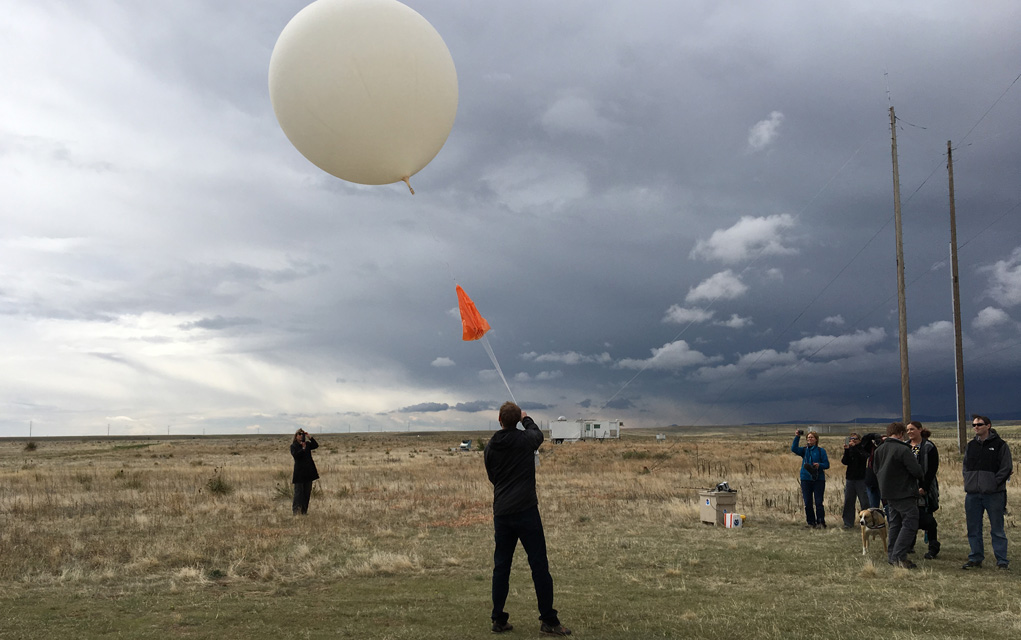
On May 16, scientists from the National Oceanic and Atmospheric Administration (NOAA) in Boulder published a study in the scientific journal Nature that points to a rise in emissions of a banned ozone-destroying chemical known as trichlorofluoromethane, or CFC-11. According to the study, these emissions appear to be originating somewhere in east Asia.
CFCs are man-made chemicals used in refrigerants, foam-blowing agents and aerosol sprays. Chlorine in CFCs causes ozone to break down into oxygen molecules, reducing the ozone layer’s effectiveness in blocking ultraviolet radiation.
CFC-11 production, along with other chlorofluorocarbons, was banned as part of the Montreal Protocol of 1987 in an effort to slow the deterioration of the Earth’s protective ozone layer. The chemicals were supposed to be phased out entirely as of 2010 and concentrations were expected to decrease more rapidly each year.
Reduction of CFC-11 was steady between 2002 to 2012 but slowed by 50 percent after 2012. NOAA scientists say this likely points to new production of the banned chemical.
“It seems to be unlikely that that emission is from old production, which suggests new production,” says lead scientist on the study, Dr. Stephen Montzka.
Montzka says the source of these emissions can be found by looking at global wind patterns going to the atmosphere and letting it tell us what’s happening. Based on results from the Mauna Loa Observatory in Hawaii, he surmises that the CFC-11 is being produced somewhere in eastern Asia.
Lowered concentration of CFC-11 is reportedly the second largest contributor to the recovery of the stratospheric ozone layer. Montzka says that there is a possible economic incentive for the use of CFC-11 because one of its replacements is reportedly more expensive. However, he says there are other alternatives, like hydrocarbons, that are still cheaper.

While ozone-depleting substances like CFCs altogether only contribute to about 10 percent of the warming effect of greenhouse gases, Montzka says it is the potency of these chemicals that calls for environmental concern.
“We anticipate ozone-depleting substances to drop back below pre-ozone hole levels sometime in 2050 to 2070, and if CFC-11 emissions were to persist, then that date for recovery might be pushed back 10 years,” Montzka says.
This would be frustrating, he says, to the rest of the world that has “put a lot of time and effort in ensuring compliance with the protocol.”
“The Montreal Protocol has been called the most important international treaty, not only for the ozone layer but also for climate,” Montzka says.
The Montreal Protocol, according to the U.S. State Department, is the first treaty to achieve universal ratification by all countries in the world. The U.S. State Department’s website claims that full compliance to the protocol would result in 280 million fewer cases of skin cancer worldwide.
Montzka says he is thankful to modern technologies for allowing scientists to measure these atmospheric changes directly.
“The atmosphere doesn’t lie. If somebody’s emitting some long-lived gas somewhere around the world, we’ll be able to detect it,” he says.

However, even Montzka admits that repairing the ozone layer is currently not the highest priority for climate change activism, especially compared to the threat of greenhouse gases like carbon dioxide and methane. Environmental groups like the Sierra Club have long since shifted their focus onto other issues.
“It’s a problem that’s largely been solved, which is what’s so concerning,” says Steve Herz, the senior international policy ddvisor for the Sierra Club’s International Climate and Energy Campaign.
“The Montreal Protocol has been very effective,” he says. Any production of CFC-11 is “just cheating on an effective regime.”
Other than trying to figure out who is responsible, he says there’s not much we can do about the apparent continued production of CFC-11.
“It’s not like we need to mobilize people to change laws or change behavior,” he says, because the Montreal Protocol should have been the only legal action needed.
Still, in an official statement issued on May 16, the United Nations Environment Program announced its intention to review the findings and investigate the source of the emissions.
“While current scientific models show that the ozone layer remains on track to recovery by mid-century, continued increase in global CFC-11 emissions will put that progress at risk,” the statement reads. It is “critical that we take stock of this science, identify the causes of these emissions and take necessary action.”
Montzka says that the only way to know for sure where these emissions are coming from is to continuously take measurements of the atmosphere.
“We have a fairly sensitive atmospheric measurement network for CFC-11 that allows us to detect these kinds of changes — unusual emission increases — fairly early,” he says. The key to solving this mystery is “going to the atmosphere and letting it tell us what’s happening.”














